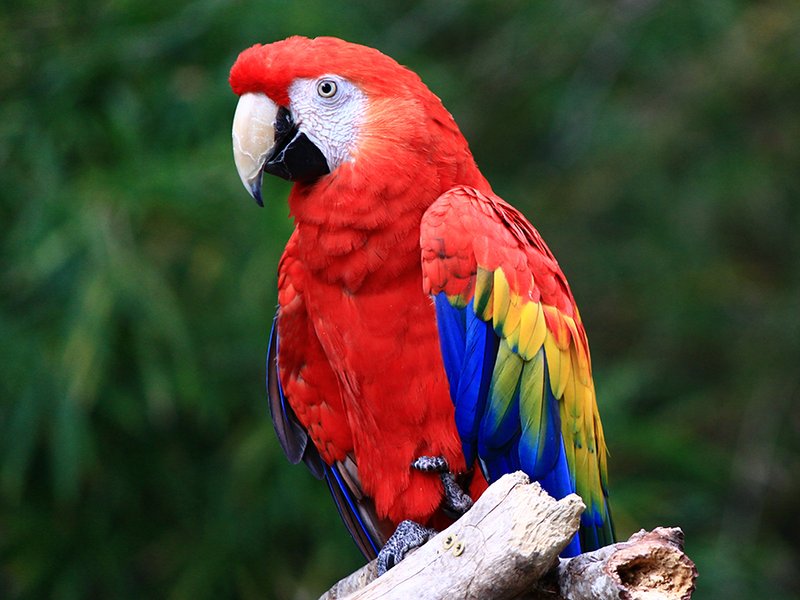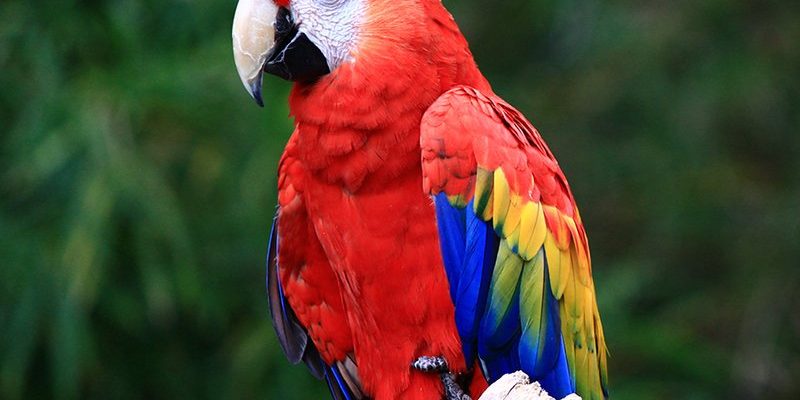
So, why should you care about what these fascinating birds are saying? Well, beyond their stunning plumage—those vibrant reds, blues, and yellows—they have rich social lives, and their vocalizations play a significant role. Whether you’re a bird enthusiast, a pet owner, or simply curious about these feathered creatures, figuring out what their sounds mean can deepen your understanding and appreciation. Let’s dive into the world of Scarlet Macaw vocalizations, breaking down what each sound signifies and why it matters.
The Different Sounds of Scarlet Macaws
Scarlet Macaws are known for a variety of vocalizations, each serving a different purpose. Some common sounds include squawks, screams, and even softer chirps. While it might seem chaotic at first glance, each sound has meaning.
- Squawks: These loud, harsh calls are often used to communicate with other macaws from a distance. Think of it as them sending a text message to friends far away.
- Screams: When a Scarlet Macaw lets out a high-pitched scream, it can indicate excitement or alarm. It’s like when we shout “Yay!” at a concert or “Watch out!” when we bump into something unexpected.
- Chirps: Softer chirps are often used during bonding or when a macaw is content. It’s similar to the soft talk we share with close friends when we’re just enjoying each other’s company.
Understanding these basic sounds is a great first step. Just like how tone and context shape human communication, the same is true for macaws.
Why Do Scarlet Macaws Vocalize?
You might be wondering why vocalization is so important for these birds. Well, for Scarlet Macaws, communication is a key part of their social structure. In the wild, these birds live in flocks, and vocalizations help them maintain relationships and alert each other to dangers.
One major reason for vocalizing is territorial behavior. When a macaw is calling out, it might be marking its territory or warning other birds to stay away. This is crucial, especially in a place like the rainforest, where resources can be limited.
Vocalizations also play a role in courtship. Male macaws often use specific calls to attract females, showing off their vocal prowess much like a singer in a karaoke bar looking for applause. This is part of their mating ritual and helps establish partnerships.
Social Interactions Through Sound
Scarlet Macaws are highly social creatures, and their vocalizations strengthen bonds within their flock. Just like how we might share laughter or stories to connect with friends, these birds use sounds to forge relationships.
For instance, you might hear a pair of macaws softly chirping to each other while they’re perched close together. This gentle exchange can indicate affection or reassurance, much like how we might say, “I’m here for you” in a comforting tone.
Vocalizations also come into play during playful interactions. When young macaws are playing, they often mimic the sounds of their elders, learning not just their calls, but also how to communicate effectively within their social group.
The Importance of Context in Vocalizations
Context is everything when it comes to understanding Scarlet Macaw vocalizations. A sound can mean one thing in one situation and something completely different in another.
For example, a loud squawk during afternoon playtime could indicate joy or a playful disposition, while the same squawk in the early morning might be a signal to gather the flock before heading out to forage for food.
You might also notice that different flocks can have their own distinct calls based on their environment and social dynamics. It’s similar to how neighborhoods have different slang or catchphrases. Understanding context helps decode these vocalizations, making it easier to grasp what the birds are communicating.
Behavioral Changes and Vocalizations
Sometimes, behavioral changes in Scarlet Macaws can lead to changes in vocalizations. If a macaw feels threatened or stressed, you may notice a shift in their calling patterns. Instead of playful chirps, they might revert to harsh squawks or screams as a form of defense.
Similarly, a macaw that feels comfortable in its setting will communicate differently than one that feels uneasy. If you notice your pet macaw grumbling more than usual, it might be a sign that something is off in its environment, like a new person or pet.
Being attentive to these changes helps you become more in tune with your macaw’s emotional state. Just imagine it like tuning in to your friend’s mood when they’re feeling off. You’d pay attention to both their words and their tone, right?
How to Respond to Your Macaw’s Vocalizations
Now that you have a grasp on what your Scarlet Macaw might be saying, how do you respond? The key is to match their energy and show understanding. When they converse with you through vocalizations, try to respond in a way that acknowledges what they’re expressing.
For example, if your macaw squawks excitedly when it sees you, you might respond with an enthusiastic voice, maybe even mimicking their sounds slightly. This can reinforce positive communication and strengthen your bond.
Paying attention to your macaw’s body language is just as important. If they are vocalizing but seem tense or fluffed up, it might be a sign of discomfort. Gently talking to them or providing a more secure space can help ease their anxiety, just as a friend might do when comforting you.
Final Thoughts on Scarlet Macaw Vocalizations
Understanding Scarlet Macaw vocalizations can feel like unlocking a treasure trove of communication. From joyful chirps to alarming screams, each sound tells a story about their environment, emotions, and interactions.
Taking the time to observe and listen to these vocalizations not only enhances your connection with your macaw but also enriches your understanding of their social behaviors. Think of it as learning a new language—one that opens doors to a vibrant, feathered world full of expression and personality.
In the end, whether you’re a dedicated bird watcher or a proud macaw owner, appreciating the nuances of their sounds can deepen your relationship. So, the next time you hear a squawk or chirp, take a moment and think about what your macaw might be trying to say!

